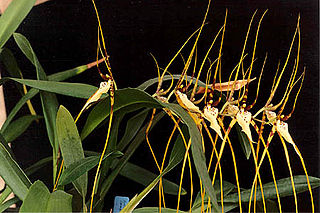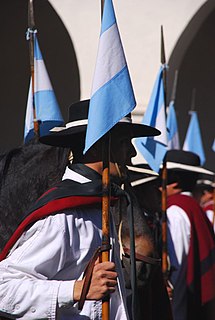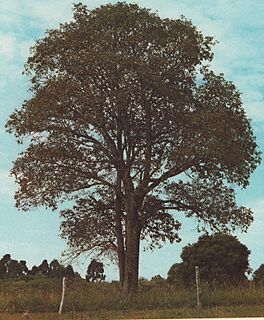
Brassia is a genus of orchids classified in the subtribe Oncidiinae. It is native to Mexico, Central America, the West Indies, and northern South America, with one species extending into Florida.

The culture of South America draws on diverse cultural traditions. These include the native cultures of the peoples that inhabited the continents prior to the arrival of the Europeans; European cultures, brought mainly by the Spanish, the Portuguese and the French; African cultures, whose presence derives from a long history of New World slavery; and the United States, particularly via mass culture such as cinema and TV.

Mandevilla is a genus of tropical and subtropical flowering vines belonging to the family Apocynaceae. It was first described as a genus in 1840. A common name is rocktrumpet.

The Amazon Cooperation Treaty Organization (ACTO) is an international organization aimed at the promotion of sustainable development of the Amazon Basin. Its member states are: Bolivia, Brazil, Colombia, Ecuador, Guyana, Peru, Suriname and Venezuela.
The 2003 South American Women's Football Championship was the fourth staging of the South American Women's Football Championship and determined the CONMEBOL's qualifiers for the 2003 FIFA Women's World Cup. The tournament was held between April 9 and April 27.

Zephyranthes candida, with common names that include autumn zephyrlily, white windflower, white rain lily, and Peruvian swamp lily, is a species of rain lily native to South America including Argentina, Uruguay, Paraguay, and Brazil. The species is widely cultivated as an ornamental and reportedly naturalized in many places.

Eschweilera is a genus of woody plants in the family Lecythidaceae first described as a genus in 1828. It is native to southern Mexico, Central America, South America, and Trinidad.

Micropholis is group of trees in the family Sapotaceae, described as a genus in 1891.

Rodriguezia, abbreviated Rdza. in the horticultural trade, is a genus of orchids. It consists of 49 known species, native to tropical America from southern Mexico and the Windward Islands south to Argentina, with many of the species endemic to Brazil.

The following outline is provided as an overview of and topical guide to South America.
Cándida Estefany Arias Pérez is a volleyball player from the Dominican Republic, who won the bronze medal with her native country at the 2008 NORCECA Girls' U18 Volleyball Continental Championship in Guaynabo, Puerto Rico wearing the number 15 jersey.
Haemonides is a genus of moths within the family Castniidae.
Haemonides cronida is a moth in the Castniidae family. It is found in Peru, Suriname and Venezuela.
Haemonides cronis is a moth in the Castniidae family. It is found in Mexico, Trinidad, Suriname, French Guiana, Brazil and Peru.

Luehea is a genus of trees in the family Malvaceae.
Warczewiczella is a genus of orchids native to South America, Central America, and Cuba.
- Warczewiczella amazonicaRchb.f. & Warsz. - Colombia, Ecuador, Peru, Brazil
- Warczewiczella candida(Lindl.) Rchb.f. - Brazil
- Warczewiczella discolor(Lindl.) Rchb.f. - Colombia, Ecuador, Peru, Venezuela, Cuba, Costa Rica, Honduras, Panama
- Warczewiczella guianensis(Lafontaine, G.Gerlach & Senghas) Dressler - Guyana, Suriname, French Guiana
- Warczewiczella ionoleuca(Rchb.f.) Schltr. - Colombia, Ecuador
- Warczewiczella lipscombiae(Rolfe) Fowlie - Panama
- Warczewiczella lobata(Garay) Dressler - Colombia
- Warczewiczella marginataRchb.f. - Panama, Colombia, Venezuela
- Warczewiczella palatina(Senghas) Dressler - Peru, Bolivia
- Warczewiczella timbiensisP.Ortiz - Colombia
- Warczewiczella wailesiana(Lindl.) E.Morren - Brazil

Mangora is a genus of orb-weaver spiders first described by O. Pickard-Cambridge in 1889.
2019 South American Championships in Athletics was the 51st edition of the biennial athletics competition between South American nations. The event was held in Lima, Peru, from 24 to 26 May at the Villa Deportiva Nacional.










